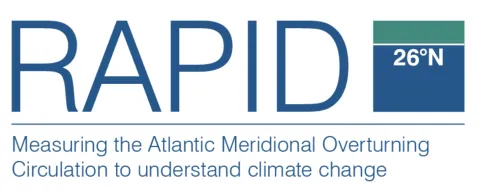The aim of this proposal is to design a lower-cost and sustainable observing system at 26°N which will provide AMOC estimates at the accuracy and frequency required by users. This goal will be achieved by exploiting the progress made in understanding the AMOC variability as well as leveraging advances in observing methodology. Target stakeholders for the resulting data products are researchers, forecasters, and decision-makers planning for the present and future effects of human-forced climate change.
The three principal objectives of RAPID-Evolution are:
- Design, test and demonstrate the technological and scientific feasibility of lower-cost AMOC observing systems at 26°N that will provide data at prescribed accuracy and frequency.
- Identify the costs and benefits of a change in the array design by quantifying the resources and the accuracy of the data products for the present-day and alternate observing approaches.
- Develop a new methodology for producing data products from the optimal new array design identified in objectives 1. and 2., including a time series of the zonal velocity field at 26°N that will enable calculation of AMOC in density space as well as depth space, and facilitate the calculation of transports of different variables.
The outcomes from the three objectives above will allow us to deploy an optimised lower-cost 26°N AMOC array from 2027, with the UK component delivered as an underpinning activity in the NERC Long Term Large Scale Single Centre National Capability programme.










